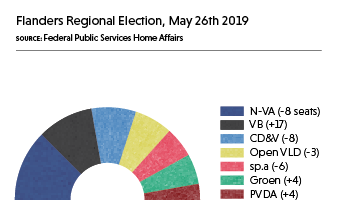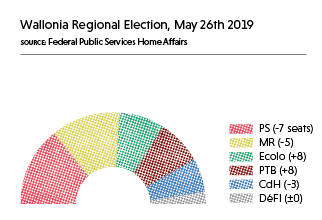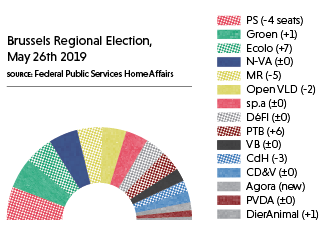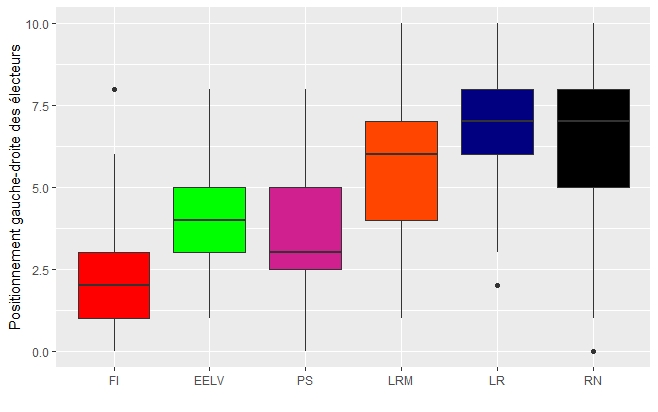Temperaturas récord en verano, menos lluvias, tormentas severas: la realidad climática de España es dura y no deja de intensificarse. Pero el gobierno español no se va a quedar de brazos cruzados; planea obtener el 74 por ciento de la electricidad a partir de energías renovables para 2030. Este ambicioso propósito es ahora objeto de un feroz debate y oposición. Rosa Martínez Rodríguez preguntó al activista climático y asambleísta regional de Madrid Héctor Tejero por qué las energías renovables se han vuelto controvertidas en España y cómo su gobierno podría persuadir a la gente.
Rosa Martínez Rodríguez: El lema del movimiento de oposición a los grandes proyectos renovables en España es “renovables sí, pero así no”, ¿qué significa exactamente?
Héctor Tejero: En primer lugar, es justo reconocer la parte de “renovables sí”, que a nivel discursivo es un paso adelante respecto a hace 10 o 15 años cuando podrían haber dicho “renovables no” y punto. Este lema une una coalición muy diversa de diferentes intereses que tienen en común la oposición a una forma de hacer las renovables. El problema es que establecen una serie de criterios que no tienen en cuenta la complejidad de la situación. Proponen soluciones apRarentemente muy razonables cuyo efecto real es retrasar la implantación de las renovables. El problema que veo es que está desapareciendo del debate el cambio climático. Y la gran paradoja es que, en el contexto de emergencia climática, incluso la renovable peor ubicada es mejor a nivel climático. Creo, además, que el lema recoge mucho agravio anterior y que en parte tiene que ver con el cambio de las formas de vida tradicionales de determinadas zonas.
En un artículo reciente en El País hablabas de que algunos de los problemas que se plantean desde estos movimientos pueden ser fácilmente solucionados.
Hay tres grandes debates abiertos: el impacto sobre la biodiversidad, el uso del suelo y la agricultura. Por supuesto, una infraestructura renovable tiene impacto ambiental. Hay mucho margen para hacer las cosas mejor, aunque a nivel global no hay ninguna duda de que el impacto es positivo: el primer vector de pérdida de biodiversidad es el cambio climático. Localmente puede haber alguna especie concreta afectada, pero el proyecto puede adaptarse. Hay bastantes ejemplos, sobre todo de la fotovoltaica, de que se pueden hacer las cosas de forma que, incluso, puedan suponer ciertas ventajas para algunas especies.
El segundo debate es el de tejados frente a suelos. Se están utilizando informes, que carecen de consenso científico, y que defienden que se podría poner toda la potencia [fotovoltaica] necesaria en tejado. La mayoría de los expertos te dicen que no es así, porque los informes reflejan un potencial técnico que luego no es tal y también por el ritmo en la instalación. Para el cambio climático no puedes esperar a poner primero los tejados y luego en el suelo, no se trata solo de poner la máxima potencia posible sino también lo más rápidamente posible. Esto creo que está muy relacionado con el tema de la agricultura y este es el debate realmente importante para mí: la gente que siente amenazada su forma de vida. Por otro lado, creo que hay una romantización desde los entornos urbanos que ve la agricultura como lo natural, frente a las placas solares. En realidad, una agricultura intensiva, industrial, monocultivo y de regadío es súper agresiva y tiene muchísimos impactos para la biodiversidad y el medio ambiente.
Se puede y se debe hacer lo posible para compatibilizar la biodiversidad y minimizar el impacto en el suelo agrícola, pero está lejos de ser un problema. Solo necesitamos un 0,3% de la superficie agraria útil, menos del 1% del total, para alcanzar los objetivos ampliados del PNIEC (65 MW) para el año 2030, y eso suponiendo que todo se instale en el campo. En España, el 10% de las tierras están abandonadas. No hay un problema general, pero donde se hace mal, desde luego que genera conflicto.
El agravio tiene que ver con una desigualdad territorial heredada. ¿Qué papel está jugando la desigualdad territorial en la transición energética?
Es cierto que la producción de electricidad está muy mal repartida en España. Hay territorios que producen muchísima más electricidad de la que consumen, como Galicia, Aragón, Navarra o Extremadura, frente a otros que consumen mucho más de lo que producen. El caso extremo es Madrid, pero también el País Vasco o la Comunidad Valenciana. Es algo que se debe corregir, pero teniendo en cuenta que la generación vendrá condicionada por la disponibilidad de viento y sol. Por otro lado, hay que tener en cuenta que la electricidad representa solo el 20% de la energía que consumimos, por lo que todas las comunidades autónomas están importando energía para mover los coches, los tractores, la calefacción, etc. Es evidente que se debe reducir mucho el consumo de energía, pero aún así ninguna está produciendo más electricidad de la que va a necesitar cuando todo esté electrificado.
En esta línea, hay un elemento en España que no existe en otros países europeos: la plataforma de la España Vaciada, que ha contribuido a articular políticamente ese sentimiento de agravio territorial.
En los últimos 20 años se ha formado el concepto de la España Vaciada, un movimiento de la sociedad civil en el que participan partidos políticos, pero que sobre todo es un sentimiento. Es un agente que siente que ha sido dejado atrás en el reparto de los beneficios del Estado español. Se centra mucho en los pueblos muy pequeños y menos en las ciudades de provincias medianas, pero genera un efecto ante el desarrollo de las renovables que viene a ser algo como “no solo tenemos menos servicios, despoblación y una sensación de que nadie se ocupa de nosotros, sino que además vamos a tener que cargar con algo que va a beneficiar solo a otros”. Esto me lleva a pensar que hasta ahora se consideraba la transición justa exclusivamente en términos laborales, y que también debemos avanzar hacia una transición justa en términos territoriales. Ahora, una distribución de las renovables que se base también en criterios de capacidad de influencia política no me parece justa. Por ejemplo, puede suceder que Teruel, al tener representación parlamentaria, consiga minimizar los impactos en su territorio. O las zonas costeras más turísticas pueden tener más capacidad para desplazar proyectos hacia otras zonas. La planificación no puede basarse en “quien tenga más capacidad de alzar la voz se libra”; esto tampoco es una distribución justa.
¿Existe una sensación de que la transición energética es impuesta, concretamente, desde Europa?
En los últimos años la gente ha asumido que hay que hacer la transición ecológica, y en España creo que está asociado al “nos obliga Europa” con una mezcla necesaria de “nos obligan pero es bueno”. Lo que muestran las encuestas es que la gente está a favor de la transición ecológica en abstracto, pero cuando bajas a políticas concretas es cuando hay conflicto. Creo que hay tres elementos en los que hacer hincapié: que tenemos la responsabilidad climática y moral, como país occidental, de contribuir mucho más que otros países; que somos el país más vulnerable de Europa, lo vemos cada verano; y por último, que es una oportunidad económica de avanzar y conseguir cambiar el modelo productivo del país. No está asegurado que se haga bien, ni tampoco que la oportunidad económica se reparta justamente, de hecho ese es el centro del conflicto que tenemos. Por mucho que a los ecologistas nos pueda frustrar que la gente no atienda el bien mayor, al final tienes que sentarte, preguntar, comprender su punto de vista y ofrecer algo a cambio.
¿Cuál es la posición del movimiento ecologista en España?
Yo creo que el movimiento ecologista está ahora mismo en una disyuntiva. Por un lado está, digamos, un viejo movimiento, el que viene de la tradición de los años 70 y 80, en el cual el cambio climático no ocupaba el lugar central. Este ecologismo con una variante más conservacionista se está encontrando con nuevos movimientos donde el cambio climático es la centralidad. El ecologismo ha hecho una tarea titánica en España para frenar auténticos desmadres que se hacían en el territorio. Ahora no solo se trata de oponerse a ciertas infraestructuras con un impacto ambiental determinado, hay problemas más grandes que van a ocurrir si no las hacemos. Esto te pone en una posición compleja y las asociaciones ecologistas se ven muy tensionadas. Todo el mundo entiende que hay que poner renovables, pero tienen un impacto en la vida rural, las aves y tienen la oposición de los vecinos. Luego está lo que llamamos colapsismo. Una postura que no es solo específica de España, sino que tiene ramificaciones por todo el mundo, sobre todo en Estados Unidos y viene del mundo del pico del petróleo, que en España tiene mucho peso en determinadas organizaciones. Han adoptado una visión de catástrofe ecológica que no encaja, en mi opinión, con los impactos que se están viendo del cambio climático. Para ellos, la catástrofe ecológica va a ser tan rápida, tan dura y grande, que las cosas que podamos hacer ahora no tienen mucha importancia.
Creo que hay un suelo político español muy fértil para ello, que tiene que ver con los movimientos sociales en una sociedad descentralizada, mirando a lo pequeño y lo rural, que encaja con la tradición libertaria y con otros anteriores, como el juntismo español. Todo eso hace que, aunque el colapsismo sea minoritario, pero ocupe posiciones importantes en los medios y el ecologismo, esté alimentando el discurso anti-renovables. Es fácil encontrar discursos de plataformas ligadas al territorio que vienen a decir que las renovables no valen para nada, que es otra forma de contaminar, que no son verdaderamente renovables o que también se consume petróleo para producirlas.
En contrapartida, hay una nueva corriente de ecologismo mucho más centrada en el cambio climático, mucho más dispuesta a participar en lo institucional, que no acepta las tesis colapsistas y ahí surge un conflicto. Era muy fácil estar en contra de un negacionista, ahora estamos los ecologistas contra retardatarios, ecologistas contra el oligopolio eléctrico, ecologistas contra ecologistas con diferentes visiones del ritmo y de cómo se debe hacer o qué costes tenemos que asumir.
Los debates son muy duros, incluso agresivos. ¿Crees que hay riesgo de una ruptura del movimiento ecologista?
Todo movimiento que surge de lo pequeño, cuando va creciendo alcanza más diversidad y genera conflictos que no siempre se pueden gestionar. Todo el mundo piensa que hace lo mejor para el planeta, para el país, la sociedad y sus hijos. No ayuda que las plataformas de debate público estén muy mediadas por Twitter, un lugar donde se genera mucho enfrentamiento.
A mí me preocupa la posible ruptura del ecologismo y también que para estas nuevas incorporaciones al activismo climático es muy fácil comprar el discurso de catástrofe inminente porque funcionan a favor de época. Ahí hay dos problemas: uno, meterse en callejones sin salida políticamente, ya que los movimientos sociales tienen un papel importantísimo en política, pero tan limitado como el de las instituciones; y dos, la eco-ansiedad. La visión colapsista refuerza estos sentimientos y genera una sensación de impotencia que me parece problemática para la salud mental del activismo en general, especialmente de la gente joven.
El oligopolio eléctrico es central en el debate público español y tiene mala reputación. ¿Cómo se puede contrarrestar esto en un contexto en el que necesitamos tanto las grandes como las pequeñas inversiones?
Cualquier proyecto que busca la transición ecológicamente socialmente justa tiene que apostar por la democratización de la energía y del mercado eléctrico. Quizás a veces caemos en la fantasía de que todo el mundo va a ser prosumidor, pero también hay gente, quizá la mayoría, que no quiere ser parte de una comunidad energética y a la que hay que aportar soluciones. Dicho esto, una de las grandes contradicciones a las que nos enfrentamos es la urgencia: hay que hacerlo rápido, y no tenemos tiempo para desmontar el oligopolio y después seguir con la transición. Así que desgraciadamente, el oligopolio va a tener un papel, pero hay que hacer todo lo posible por embridarlo y llevarlo al sitio correcto. Esto es responsabilidad del Estado y no es fácil. También hay que tener en cuenta que hay empresas que hacen las cosas de forma diferente a la hora de abordar el despliegue sobre el terreno. Se cuenta poco que hay empresas de fotovoltaica que, a diferencia de las que vienen de la construcción, están haciendo las cosas bien, incluso muy bien. Hay otro oligopolio, mucho más poderoso que el eléctrico, que es el de los combustibles fósiles, que en España tiene menos mala fama, a pesar de que ha trabajado abierta y directamente contra la transición ecológica. Esto no es una pelea del oligopolio frente a lo pequeño, es una pelea del oligopolio de la electricidad contra el oligopolio del gas y el petróleo. Si no quieres beneficiar al oligopolio de la electricidad, alguien va a hacer dinero vendiendo gas a ciclos combinados y diésel a los coches. Y esos, tampoco son pequeños productores de gasolina.
Otra de las ideas que cobra fuerza es el reparto de beneficios. ¿Cómo podemos compensar a las comunidades afectadas?
Una parte del conflicto viene de la percepción de que las renovables son todo costes y ningún beneficio. La gente está dispuesta a aceptar determinados impactos en su territorio si percibe que tiene beneficios a cambio. Hay que hacer un esfuerzo en dos sentidos, en primer lugar, generar mecanismos legales de mediación, por ejemplo, oficinas especializadas; y por otro lado, compensaciones económicas o mejoras de servicios. Las empresas pueden ofrecer ya electricidad gratis, pero no es generalizable. Una opción sería regularlo con mecanismos para que la factura baje en función del número de habitantes o el número de instalaciones que tengas en tu territorio. Es complicado de hacer, porque se trata de corregir el mercado, pero podría resultar no solo en ahorro para las familias, sino que puede ser un elemento de competitividad para la atracción de empresas y la creación de empleo. Otra propuesta sería crear una especie de fondo de inversión, como hacen en Noruega con el petróleo, y que ese fondo revierta los beneficios de la generación en las zonas afectadas. Se podría financiar con un pequeño incremento del precio, que no sería mucho y permitiría disponer de fondos para hacer inversiones concretas en las zonas donde se van a llevar a cabo grandes proyectos: infraestructuras necesarias, un centro de salud, servicio de taxis a demanda… Explicando de dónde viene ese dinero, permitiría que la gente vea que hay un beneficio además de pagar menos por tu electricidad.
¿Qué es lo que está en juego si no conseguimos hacer un despliegue justo y negociado de los proyectos de renovables?
La transición ecológica es como deshacer un mundo y hacer otro, y siempre que haces eso, generalmente al principio tienes más enemigos que aliados; estás alterando modos de vida y lo que les prometes es algo difuso. Arrastramos el problema del liberalismo económico y la ilusión permanente de que todo puede ir a peor. Si las primeras renovables son procesos injustos, la gente creerá que lo que va a venir después también lo será. Es importante hacer las cosas bien para que sean un ejemplo y, además, para que no supongan grandes cortes o paradas en la transición. Lo que está claro es que no estamos ni para moratorias ni para parar las cosas hasta que las planifiquemos. Y esta es la gran tragedia, no se trata simplemente de poner infraestructuras: se trata de detener la gran amenaza de la crisis climática. La transición en su conjunto, cuanto más justa sea, más rápida irá.
¿Qué hemos aprendido que nos pueda permitir anticipar o hacer las cosas de otra manera en el futuro?
Buena pregunta. Hay que hacer ver que la transición ecológica tiene que servir para vivir mejor, pero no en comparación con lo que ya tenemos, sino sobre todo en comparación con la posibilidad de no hacerlo. Esto supone cambiar el discurso, dejar de estar siempre al borde del catastrofismo y empezar a hablar de posibilidades: reducir el tiempo de trabajo, mejorar el sistema de cuidado, vivir en ciudades con aire más limpio o de mejor calidad, trabajar de otra forma, etc.
Al mismo tiempo, hay que ser conscientes de que la batalla ecológica es una batalla política llena de conflictos justos e injustos, que no siempre vamos a poder anticipar. En primer lugar, hay que convencer a la gente de que es necesario hacerlo, porque a veces damos por hecho que la gente sabe que esto va a suceder y no es así. Y en segundo lugar, hay que planificar los mecanismos de compensación y diálogo que faciliten la adaptación. Las transiciones son complejas y, por lo general, al principio a la gente le cuesta mucho, pero una vez que ve los beneficios, no quiere volver atrás, como por ejemplo con las peatonalizaciones.
La transición ecológica es más que un proceso técnico de sustitución de tecnologías, es un proceso de cambio social. Por eso, necesita reclutar a científicos sociales que le den una aproximación más centrada en las políticas públicas y en los conflictos presentes aquí y ahora. Es necesario que los politólogos, sociólogos y economistas empiecen a pensar no solo en el cambio climático como un telón de fondo, sino como la gran transformación de nuestro tiempo. Necesitamos personas que anticipen conflictos y generen todo el conjunto de herramientas políticas y compensaciones necesarias. La gente comprende que habrá una transición ecológica, pero tiene dudas sobre cómo les beneficiará y si traerá o no una vida mejor. Es ahí donde nos jugamos mucho.










